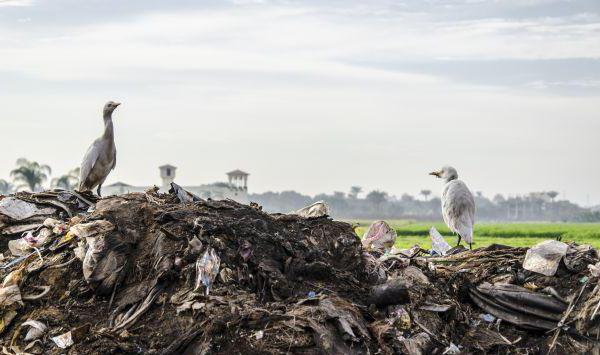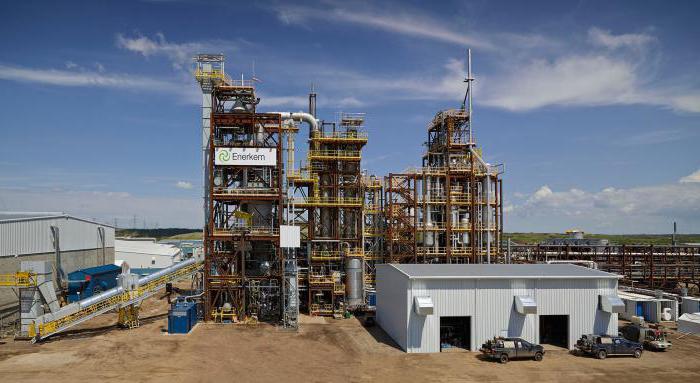Nowadays, many people think about what leads to too active emission formation, as a result of which there are a lot of different opinions and precedents. For this reason, almost every country has developed specialized standards for waste generation, designed to regulate their occurrence.
The handling of emissions is probably the most serious problem of the overwhelming majority of specialists working in various enterprises. This area of industrial ecology is considered one of the most problematic, because, despite the fact that the process of formation and the subsequent fate of all these substances is extremely clear, the current legislation that sets standards for waste generation is quite extensive and confusing.
In 2008, the government established some amendments, freeing modern enterprises operating in the field of small and medium-sized businesses, from the need to carry out quite laborious and costly in terms of project development resources and limitations. Today, they should provide information on the actual occurrence, as well as the waste management technologies used, as a report every year.
For such companies, there simply does not exist such a thing as “waste generation standards”. Instead, they simply pay a fee for the fact that their emissions have a negative impact on the environment, but at the same time they must all be placed on specialized landfills.
At the same time, large enterprises and a number of legal entities that do not fall into the category of small or medium-sized businesses must still be obligatorily involved in the development of the NOOLR project, and they must also take into account waste generation standards that are determined by this project.
In order to understand this issue in more detail, it is necessary to examine in detail the legislative framework and, first of all, determine what the standards and possible limits are.
What is it?

As the current legislation states, in order to prevent the negative impact on our environment from economic or any other activity, both individuals and legal entities must carry out their work in accordance with the standards of permissible impact, including also includes waste generation standards and established restrictions on their content.
In the event that the company exceeds the established standards, then depending on what subsequently caused damage to the environment, it will have to bear responsibility under the law. Thus, the development of standards for waste generation is carried out to regulate the impact on nature, and their excess is a direct basis for regulatory authorities to ensure that this company is held accountable.
The concepts
Standards represent the established amount of waste of one kind or another in the production process of one unit of production. The limit is the maximum allowable amount of certain substances that can be placed in a certain way for a specified period in the facilities, taking into account the environmental situation in this territory.
The limit is the allowable amount of waste that can be collected by the enterprise for subsequent transfer to a specialized licensed landfill or some other long-term storage facility for such substances.
This indicator is set in accordance with the capacity of the drive at the enterprise, as well as the maximum accumulation period provided before it is transported for placement or any other type of disposal. It also takes into account the rules that were established when the development of waste generation standards was carried out. That is why their definition requires close attention.
However, it is worth noting that this is only one point of view on the rather vague concept of “limit on waste disposal”. Another stipulates that this term only refers to their storage or disposal at specialized facilities and in no way refers to the accumulation of these substances directly on the territory of the manufacturing enterprise. Ultimately, maximum accumulation can be regulated only by a separate section of the NOOLR project, as a result of which the calculation of production waste generation standards is already being carried out.
Legislation Position

The most specific definition can be seen in the current procedure for the development of such documents, which is established by law. In this order it is said that the standards for waste generation are designed to determine the expected quantities of substances of one or another type, taking into account the planned volumes of production of a particular product, as well as the provision of services and work performed.
The development procedure, as well as the calculation of production waste generation standards, provides certain requirements for the preparation and further submission of documents and various materials for the approval of the maximum allowable amounts of garbage of one kind or another sent for further placement in certain facilities. Moreover, this procedure must be carried out in accordance with the environmental situation in the territory where these objects are located.
This definition is fully consistent with the definition of the content limit, which is established by Federal Law No. 89-F3. Given this, the calculation of waste generation standards in accordance with the NOOLR project provides for the use of a placement limit, and not a standard for their generation, and only a violation of the limit can be considered an administrative offense.
Features of laws

In accordance with paragraph 11 of the Procedure, the standards should be approved for five years, provided that thereafter, annual confirmation will be carried out by private entrepreneurs or any legal entities of the invariability of the production process used, as well as the raw materials used in the form of a report. This report should take into account the calculation of waste generation standards and be developed in full accordance with the methodological guidelines established in clause 4 of the Procedure, and it should be submitted in a notification manner to the local authorities of Rosprirodnadzor, which approved the standards used.
How is the report compiled and taken into account?

This technical report should be based on accounting documents confirming work with similar substances. Various regulatory authorities can see in the report an extremely clear picture of the formation and further work with garbage at the enterprise, and it is worth noting that according to the accounting documents provided, it is possible to determine whether the standards for the generation of production waste were violated, but it does not indicate any excess of the limits, since the report itself cannot provide any information about the established limits.
If the development of the project was carried out in full accordance with the Methodological Guidelines established by law, then in this case it will have to have established standards that will be extremely close to real conditions.Unfortunately, quite often the estimated standards for the generation of production waste can be wrong, and already in the first year of the company’s work on a new project, it turns out that in fact the general education significantly exceeds the indicators that were calculated earlier.
How to act in such a situation?
Nature users are well aware of what threatens if the established NOOLRs are absent: in the process of calculating the quarterly payment for an IEE, the amount of waste that is currently located at the landfill will be multiplied by a factor of 5. Moreover, if the standards for production waste generation exceeded if their handling does not provide for their storage or burial, but at the same time the entire volume was transferred to licensed companies in a timely manner without excessive accumulation, without increasing their fees etsya. More specifically, this fee is not charged at all.
Such a coefficient is also used if there is a developed draft of standards for the formation and limits of waste disposal, but in a certain reporting period there is an excess amount of substances compared to what is established by these documents.
The unforeseen expenses on the established payments for the IEE are, of course, not the most pleasant, but not everyone knows if there are any other problems that the excess waste will entail.
Other consequences

If the standards for the generation of production waste are violated and the limits for their disposal are exceeded, the activities of private entrepreneurs or legal entities in the field of waste management by the competent authorities may be limited, suspended or terminated in the manner provided by applicable law. The term here also depends on which group the offender belongs to.
Thus, one of the most common sanctions that can be applied to enterprises that violate waste generation standards is to completely stop activities in the field of handling such substances (this also includes accumulation and disposal), which in fact means that all work enterprise stops, because the company can not work without forming them.
Sanitary and epidemiological requirements
In the event that the enterprise or individual does not comply with any environmental or sanitary-epidemiological requirements, an administrative fine is imposed on him, which varies depending on which group the violator belongs to:
- citizens - 1000-2000 rubles;
- officials of 10000-30000 rubles;
- persons who conduct entrepreneurial activities without having a legal entity - 30,000-50000 rubles;
- legal entities - 100000-250000 rubles or a complete stop of the enterprise for up to 90 days.
It is worth noting the fact that this list of actions does not include the standard for waste generation. If the company has accumulated a certain amount of substances within the established time period that exceeds the boundaries established by the NOOLR project, and as a result has placed them on the landfill, then this article may already be used for it. However, common sense suggests that basically exceeding the norms in the overwhelming majority of cases also leads to a violation of these limits.
Handling without accommodation

The norm of waste generation, when working with which placement is not implied, has a lot of features. In this case, many often think about whether the company has the right to, for example, exceed the standards for the formation of used batteries or fluorescent lamps in the event that these wastes are handed over to licensed companies, which will avoid possible excess environmental impact.
The current legislation, which determines the standard and the limit for waste generation, does not give a clear answer, however, there is a judicial practice for resolving such disputes, which suggests that in the overwhelming majority of cases the enterprise is still found guilty.
What happens in practice?

More often, it happens that companies are faced with a violation of placement limits, and it will be quite difficult to present concrete evidence that this excess was indeed allowed. After all, if the inspector, who checks the standards for the generation and disposal of waste, sees a completely filled container on the territory of the enterprise, this does not mean that the limits have been exceeded. Such a violation may also be classified as a violation of sanitary-epidemiological or any environmental requirements governing the handling of such substances.
For this reason, most often, checking the standards of formation and limits for waste disposal, inspectors proceed from the assumption that exceeding the established norms, determined in accordance with the studied accounting documents, also means violation of these limits. Such an assumption is quite logical, but not always legal.
In this regard, it is always necessary to correctly draft waste generation standards so that the enterprise can then act in accordance with it without any violations.



